Did you know? You can produce at home the pink peppercorns found in shops! This pink peppercorn in fact grows on Schinus, trees originating from Peru and Latin America. They have naturalised in many regions and are commonly found in southern France, where they benefit from warm, dry climate they need.
Do you have a Schinus at home and wonder how to harvest and use these berries with their unique flavour and lovely pink colour? This tutorial is for you!
Where do pink berries come from?
Among all peppers found worldwide, pink peppercorn is the only one that rather misleads by its name, because it is not part of Piper nigrum, which gives us familiar black and white peppers, and botanically speaking these are not berries but drupes. Also called false pepper or bourbon berry, pink berries come from the fruiting of Schinus molle and Schinus terebinthifolius, the two most common, trees of family Anacardiaceae, which also includes pistacia lentiscus, true pistachio and mango.
Schinus is a very attractive ornamental tree, still underused here, prized for its semi-trailing, somewhat weeping habit, its evergreen foliage made up of light leaflets with a peppery scent, and its attractive bark as it ages. Able to reach about ten metres in southern France, it grows in mild regions, as it is rather sensitive to cold (hardy to about −10 °C when mature).
Only female plants produce small cream to yellow flowers that turn into clusters of pink berries after summer.
In the Andes, this tree is used not only for its berries in syrups or fermented drinks, but also for its wood and bark and for its leaves, which are used as fuel or for therapeutic purposes.
NB: less common here than Schinus molle, Schinus terebinthifolius also produces very aromatic pink berries, but they can irritate skin when handled.

Harvesting
Once fruits colour to a fine pink to coral-red hue, sign of ripeness and good flavour, they can be harvested. This happens in autumn, between August and September. Watch colour change of the berries on your tree. Harvest the pink drupes by hand: cut ripe clusters with pruning shears or scissors. You can harvest in two passes, depending on berries' ripeness.
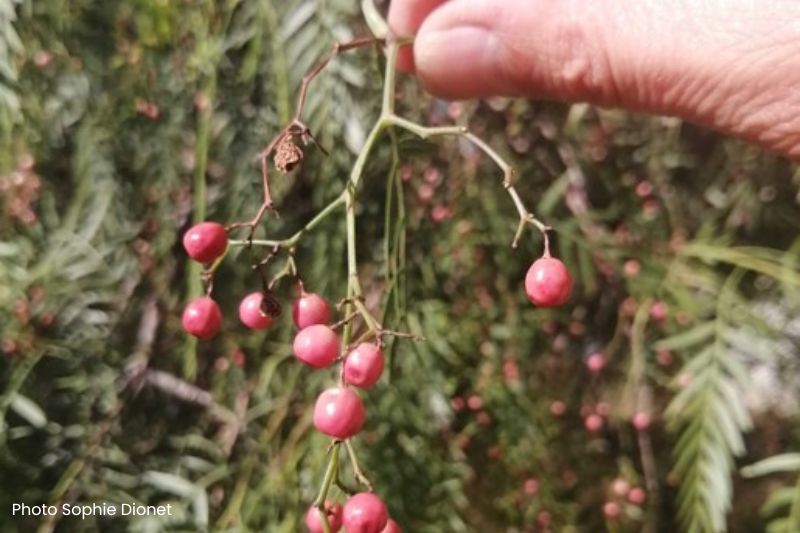
Then strip berries from clusters gently by hand.
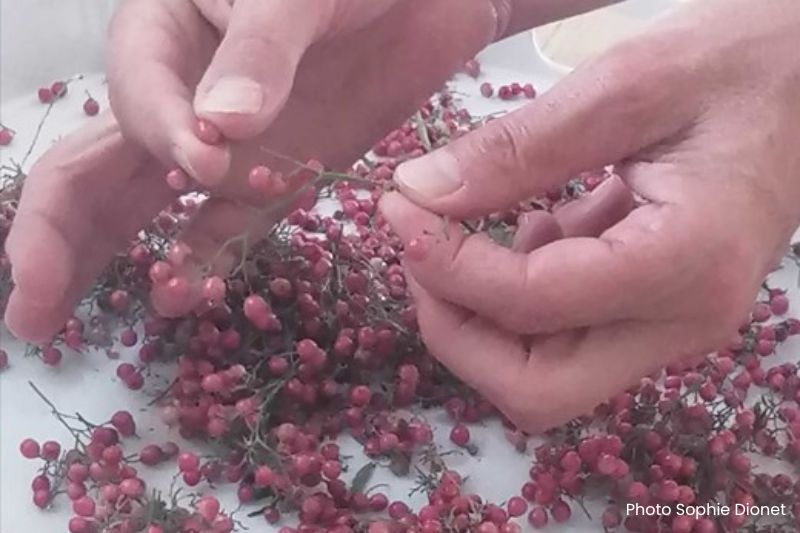
Drying and storage
Once harvested, berries can be dried, but this is not obligatory, as they can also be eaten fresh. As Schinus molle produces large quantities of drupes, it is convenient to dry them for personal use… or to give away!
Ideally, if you live in south or a region still sunny at harvest, dry them on a tray, spreading berries well, and place in sun (or even in a greenhouse). After a few days berries will be nicely dry. Otherwise indoors they will dry just as well, albeit more slowly. You can also dry them in a very low oven (40–50 °C) for 2–3 hours depending on quantity, stirring every hour.
Store in an airtight glass jar (eg small Le Parfait type jars with rubber seal) or in an old spice bottle, in a cupboard, in any case in a dark place at room temperature.
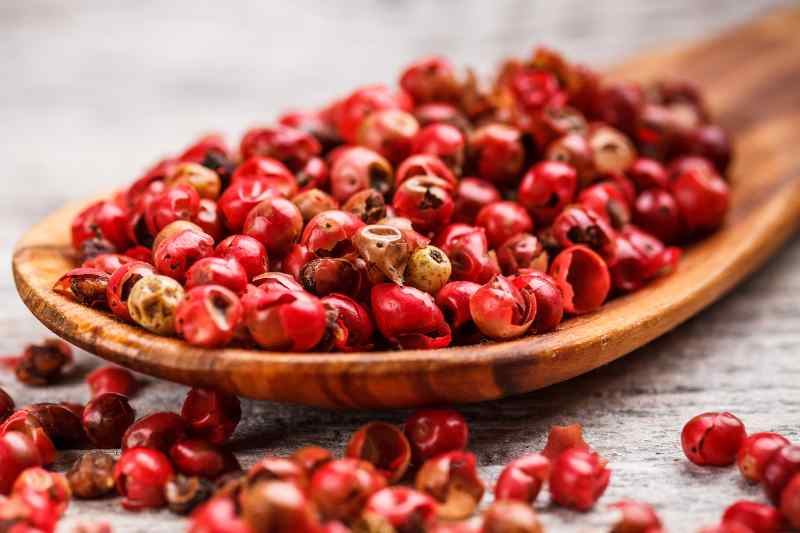
Culinary uses
Beyond their colour that brightens a plate, pink berries bring a unique, hard-to-define flavour: they have none of black or white pepper's bite, but rather a fruity taste. However, some people I know do not like their flavour, so… ask guests whether they like them before adding to dishes.
I use them a lot as a condiment to enhance summer salads based on fish, for example in a salad of quinoa, avocado and prawns with plenty of garden herbs and a soy-based dressing, finishing with berries simply stripped over just before serving. I also always use them on a warm potato and mackerel salad, to which I add capers and red onion, all enlivened by a mustardy vinaigrette. They also go very well with fresh cheese on canapé bites or in salad!
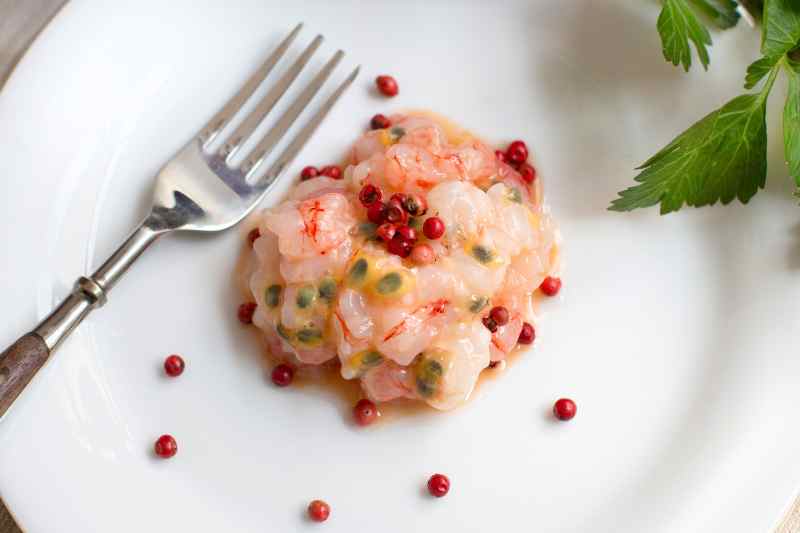
Use like other peppers at the last moment (do not add during cooking!), having beforehand either ground them in a pepper mill, crushed in a mortar or simply stripped by hand. These small pink berries are ideal in a gravlax when out of dill, or ground over red meats.
You can also try them in sweet applications in exotic fruit salads or citrus salads, incorporating them, but always in small quantity so they do not become dominant. They pair intriguingly with chocolate desserts such as chocolate mousse.

Learn more
Want to season dishes straight from the garden? You can also grow pink pepper from Sichuan pepper (bushes of genus Zanthoxylum) or Drimys. Vitex agnus-castus (chaste tree) produces berries to harvest in autumn that can be used as a pepper substitute. Finally, marsh pepperwort, this wild perennial, also serves as a peppery condiment, hence its name marsh pepperwort.
Feel free to read our articles Choosing ideal pepper tree for your garden, Tasmanian pepper: all our tips for success, and how to harvest and store marsh pepperwort?
Blog Papilles et Pupilles by Anne Lataillade offers a wealth of ideas for using pink berries in recipes, all tempting… Aprons on!
I invite the French speaking readers to discover this very complete article on Schinus on the website Le peuple d'à côté to learn much more about this false pepper tree with its many uses and legends.































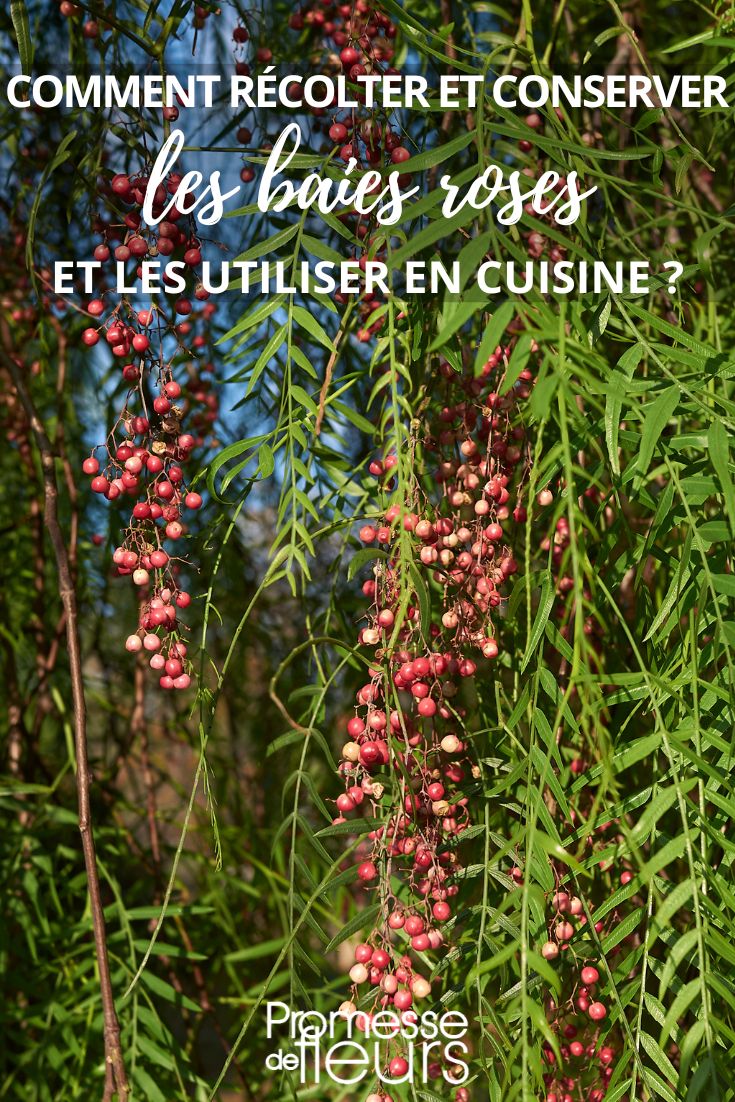
Comments